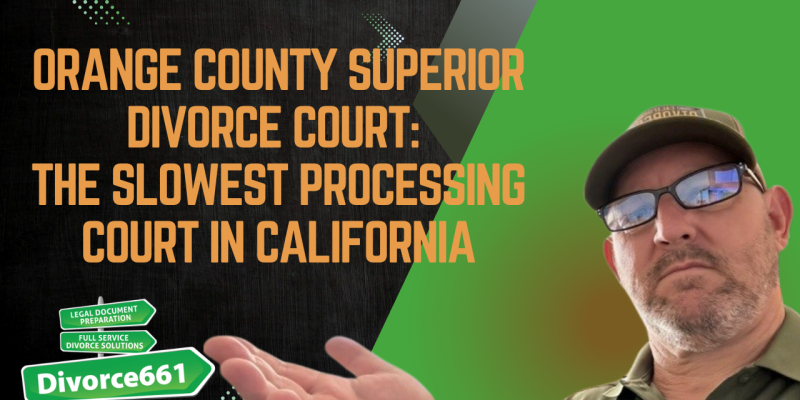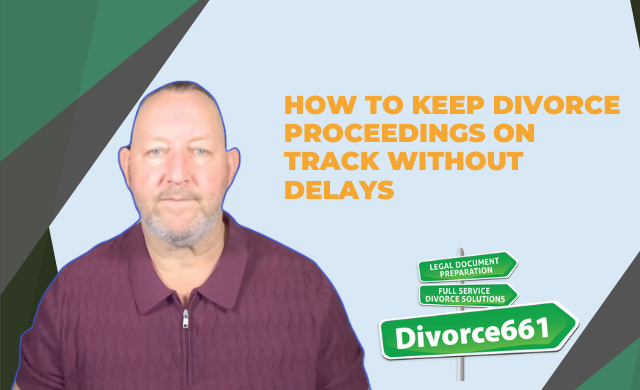How to Avoid Common Mistakes in Palmdale Divorces
Simple errors in divorce paperwork can turn a straightforward split into a months-long headache. In Palmdale, where the Los Angeles County Superior Court uses an e-filing system, accuracy matters. A single oversight can mean rejection, delay, and extra stress. This guide explains the most common pitfalls and gives practical steps to keep your divorce moving smoothly toward final judgment.
Most common mistakes that cause delays
- Incorrect or incomplete e-filing submissions. Small formatting or filing errors trigger automatic rejections in the county system.
- Missing financial disclosures. California requires financial disclosures in nearly all divorces. Skipping them—even if both parties agree—can stop your case cold.
- Assuming the divorce is final after six months. The six-month waiting period does not mean the court automatically enters a judgment for you.
- Failure to submit judgment paperwork. If judgment forms are never filed, the case remains open even after the waiting period.
- Poor coordination on agreed terms. Agreements not properly documented or signed can lead to additional filings or court involvement.
Why these mistakes matter
The Los Angeles County e-filing platform enforces strict requirements. Rejected filings are logged and must be corrected and resubmitted, which adds days or weeks to the process. Financial disclosures are not optional; they give the court information on income, assets, debts, and expenses, which is essential for any judgment the court might enter.
Many people rely on the idea that a divorce automatically finishes after six months. That assumption is risky. The six-month period is the earliest the court can finalize a divorce, but someone still needs to submit the judgment package and required paperwork. Without those filings, the case remains active and unresolved.
Real-life example: how a simple oversight stalled a case
A Palmdale resident assumed their divorce was final six months after filing because both spouses had agreed on the terms. In reality, no judgment was filed and the case stayed open. This caused unnecessary anxiety and confusion. After reviewing the file, the paperwork was corrected and the judgment was filed. The divorce was finalized within a few weeks.
This situation highlights the difference between waiting out a statutory period and actually completing the administrative steps that close a case. The paperwork—not the calendar—controls finality.
How to avoid delays: a practical checklist
- Prepare and proof every form before filing. Double-check names, dates, signatures, and attachments.
- Include complete financial disclosures. File income and expense declarations, schedule of assets and debts, and any required supporting documents.
- Confirm e-filing acceptance. Monitor the filing system for acceptance confirmation and correct any rejections immediately.
- File judgment paperwork promptly. Don’t assume finality after six months—submit the judgment package as soon as you’re eligible.
- Keep clear copies and a timeline. Maintain electronic and printed copies of filings, timestamps, and service confirmations.
- Get professional review. Have an experienced specialist or attorney review forms before filing to catch common mistakes.
Financial disclosures: what to include
Financial transparency is required. At minimum, include:
- Income and expense declarations
- Schedule of assets and debts
- Recent pay stubs or income documentation
- Bank statements and retirement account summaries when relevant
Even when spouses agree on how to divide assets, these disclosures ensure the court has complete information and prevent future disputes or motions to reopen the case.
What to expect and realistic timelines
Expect administrative steps after the six-month statutory period. If filings are complete and accurate, final judgment can follow quickly. If errors occur, prepare for back-and-forth corrections with the court and additional waiting time for acceptance.
Taking care of paperwork early and accurately reduces the likelihood of unexpected delays. When every form is correct and all required disclosures are attached, the process moves far faster.
Final thoughts and next steps
A single oversight can lead to significant setbacks.
Accuracy and timely filing are the two most important factors in avoiding delays. Use the checklist above to stay organized and verify each filing. If you prefer to have the process handled for you, consider a full-service option that offers document preparation, e-filing, and judgment submission on a flat-fee basis—especially if you are looking for a remote, no-court-appearance solution.
To get personalized help or a file review, schedule a free consultation at divorce661.com.










